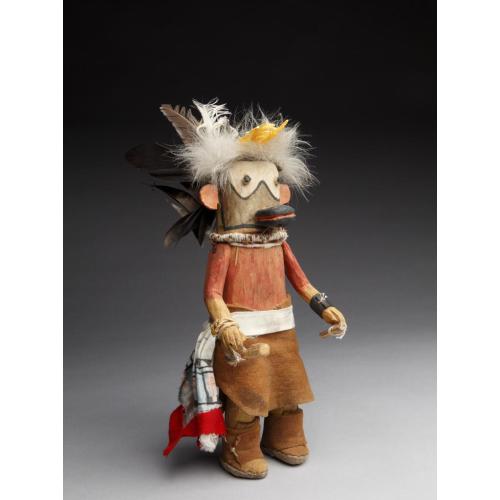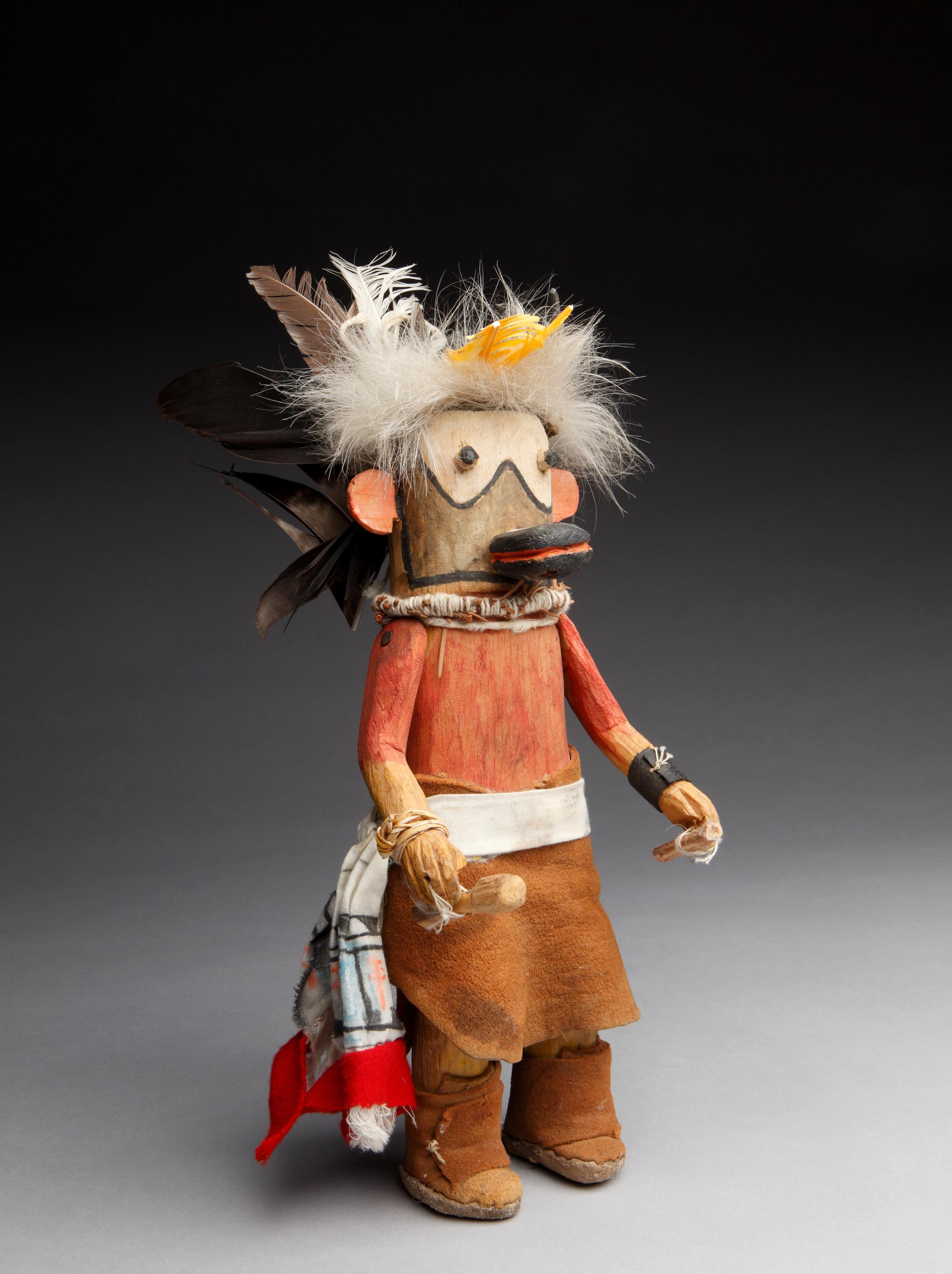
Photograph by Addison Doty. Copyright 2014 School for Advanced Research.
Kokko we'ha | Wakyashi | Cow
Artist or Maker: Unknown
Dimensions:
Overall: 25.4 cm (10 in.)
Medium: wood | paints | feathers | leather | cloth | cotton
Place Made:
Zuni Pueblo, McKinley County, New Mexico, Southwest, United States, North America
Object Number: IAF.C1
Not on view
Tribal Collection Review RemarksJim Enote and Octavius Seowtewa during collection review visit April 6 and 7, 2009 (Events Record “Collection Review: Zuni Tribe, Review 1”): This kokko is part of the Cow Dancer group, in which several different colored Cow kokos come out at the same time. It can also accompany the Wodem Thla (Mixed Dancers) group. Another version of this kokko is SAR.1994-10-1.
ADDITIONAL INFORMATION: Jim Enote and Octavius Seowtewa during collection review visit April 10 and 11, 2014 (Events Record “Collection Review: Zuni Tribe, Review 13”): The kokko’s face is painted white and green, outlined in black and with a black W-shaped line separating the upper part of the face from the lower part of the face. The eyes are protruding and painted white with black pupils. The ears are rounded and painted red. It should have two horns, but the one on the right is missing. The left horn is present and is painted white with a black tip. The kokko’s snout is attached to the figure with a dowel and is painted mostly black, with a red line for the mouth and a white chin patch. It’s attached upside down—the nostrils are pointing down and the white chin patch is pointing up.
The top of the figure’s head is covered with white fur that could possibly be bobcat or mountain lion belly fur (but this is not certain). There are two feathers painted yellow that are tied to the fur. Five eagle feathers are tied to the back of the head (the dark ones) and also one white chicken feather. The remains of an evergreen ruff (probably Douglas Fir or Blue Spruce) is tied around the figure’s neck; most of the needles are broken off.
The figure’s torso and upper arms are painted red. The paints on the figure appear to be commercial paints. The arms are articulated at the shoulders and attached to the body with a nail through each shoulder. The lower arms are painted yellow. It wears a black leather bow guard on the right wrist and holds a stick in the left hand, tied on with a white cotton string. On the right wrist, a strip of yucca is tied on as a bracelet. It holds a carved wooden rattle in the right hand, tied on with a white cotton string.
It wears a commercially tanned cow leather kilt that is dyed brown. Tied over the kilt is a sash made from white cotton muslin painted with sash embroidery designs. Each end of the sash is edged with a strip of red flannel. The kokko’s legs are painted yellow. It wears tall, handmade moccasins, the uppers of which appear to be made from the same leather as the kilt. “300” is written in pencil on the figure’s back.
The figure is missing several pieces of the costume that this kokko dancer would wear. It is missing two hawk feathers on the top of its head, a turquoise necklace, a turtle shell rattle that should be tied to the right leg, a fox pelt tied over the back of its kilt, arms bands on each of its upper arms, and a bracelet on the left wrist. The stick or staff the figure holds in its left hand should have a fringe tied to it, similar to the one seen in the left hand of SAR.1994-10-1 (also a Cow/Wakyashi kokko figure).
In Collection(s)
Bibliography:
The Indian Arts Research Center, in collaboration with Native American community scholars, strives to present accurate collections records. Records may be updated as new information becomes available and is reviewed with the Native American community having cultural affinity to particular items. Please write to iarc@sarsf.org if you have questions or concerns related to the documentation.
